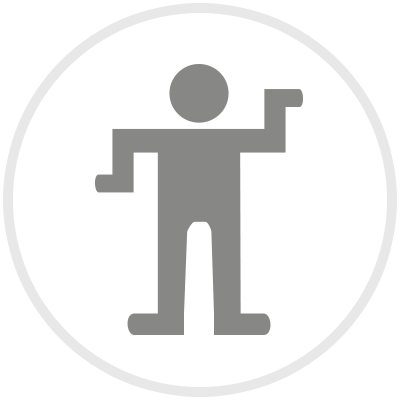L’Associazione Culturale :alternativa.mente:, in collaborazione con il caleidoscopico Bar Via delle Torri, presenta: “Life in his eyes”, mostra fotografica di Kev Byrne.
Per noi, novembre è il *mese della prevenzione* della realtà osservata attraverso il filtro di un’unica ed apparente dimensione, ed il Bar Via delle Torri, che non è un semplice bar, ma una spettacolare e multicromatica galleria d’arte diventa la location ideale per la personale di Kev Byrne, english teacher e artista multidimensionale, i cui scatti rendono al meglio l’intensità di un approccio all’esistenza curioso, denso, intrigante.
L’inaugurazione della mostra è prevista sabato 17 novembre, accompagnata dal curatissimo aperitivo del Bar Via delle Torri e dalla multiforme selezione musicale di I Love Tempo Djs.
Tracce fotografiche della serata, come sempre, a cura di Claudia D’Alò.
Le parole di Kev :)
Bio
Kev Byrne, nato a Londra nel 1971, ha scoperto la fotografia (analogica) mentre faceva finta di studiare Art and Design a Londra nel 1993. Ma è a Taranto, nel 2008, che ha cominciato a conoscere il mondo del digitale. Adesso vive a Taranto, è sposato con una tarantina e ha tre meravigliosi figli. Lavora alla British School di Taranto dal 1997 e per Pilgrims English Language Courses dal 2000 alla University of Kent in Inghilterra. La fotografia per lui è un hobby che prende seriamente, nonostante sia un dilettante. Cercatemi su flickr: Kev Byrne 1971...
People and Buildings
Queste foto sono principalmente dei miei figli (modelli perfetti!) e ho cercato di catturarli nei momenti naturali e candidi, non sempre facile, con un occhio al mood ed effetto grafico sfruttando la luce/contrasto meravigliosa di questa parte del mediterraneo. Questa stessa luce crea ombre - per quanto mi riguarda – bellissime ed ottimo per i particolari dei palazzi e dei archi-abstract foto!
Macro
Un campo nuovo e stupendo per me. Mi piace molto l'ambiguità di un super macro che porta a chiedere: “Ma che cos'è?” Perfetto!
Si può fare facilmente un macro quasi ovunque e nessuno può darti fastidio chiedendo che cosa stai facendo. Infatti, questi macro sono stati realizzati quasi tutti a casa mia in santa pace. Le foto esposte sono state stampate su carta con uno strato magnetico in tal modo che possono essere attaccate su qualsiasi superficie metallica (qui abbiamo usato le mensole della mia cantina!). Le foto possono anche essere spostate per creare una nuova formazione: un quadro dinamico!
Equipaggiamento
Tutte le immagini sono state scattate con una Panasonic Lumix DMC-TZ5 (compatta) e una Panasonic Lumix DMC-FZ38 (bridge con un Raynox Macroscopic Lens M-250) e sono state sviluppate con Lightroom 2.1 di Adobe Suite.
English
People
I remember a friend of mine (who happens to be a pro photographer) once commented on a portrait of my kids. He was wonderfully blunt: "What's that? Why on Earth do people cut feet off! Why did you do that?" It was true - I had completely chopped Amelie's pretty little feet off (not as bad a my mum though who used to always cut people's heads off!). Why? Is it because we focus so much on faces (as a species) that we sometimes disregard the other bits? Or is it simply a lack of compositional awareness? Even though I am enjoying learning how to do portraiture and I find it a lot trickier than architecture or macro. I wonder why that is? Is it because we are too involved, too egocentrical and we tend to see ourselves in these portraits? Is it the fact that you need a certain amount of skill at reading a situation to predict the shot as so many of the great street photographers have done (and still do)? I have no idea.
I'm really lucky as I have some great models and most of my portraits are of them: my kids. You won't find many snapshots of smiling faces all looking sweetly at the camera - I dislike that contrived, facebook type of photography although I do accept that social networking and cheap compacts have also made photography accessible to a much wider rage of user (a bit like Eastman many years ago) - a definitely good thing in many ways - sad in others.
No, I much prefer candid, natural captures (if such a thing exists) taken with an eye for composition and moody, evocative content. I do on occasion ask my kids to pose, or to try to get them to stay still long enough for me to capture them! Not easy, but certainly challenging and satisfying at the same time. I have quite a few books of steet photography and remain speechless at the scenes they contain, and the emotions they portray, especially those taken from the 1920s onwards, and particularly those connected with Paris, mon amour. I find them a huge source of inspiration and believe we can learn a lot from them just by observing their work and by asking why these early masters' shots work so well. Naturally, my shots have hardly anything in common with those masterpieces if not only for the fact that I prefer black and white! My shots are just other people seen by me.
Archi-abstract
Capturing those shadows and lines that prevail all around us within our modern concrete world is something I love doing - maybe even my favourite thing - at the moment at least - in photography. I have no idea where this passion for archi-abstract shots (as a Flickr friend calls them!) comes from - it may have been an early teenage fixation on M.C.Escher or something, I don't know. However, I welcome it. It can be so exciting seeing those shadows and angles link up to reveal the hidden shapes and forms that are always around us if we care to look for them. As for looking for them, I owe a lot to the thousands of groups and amazing photographers who have been shooting these kind of shots for ages, and from which, I have no doubt leeched ideas, drawn upon them, and hopefully through osmosis absorbed a little of the ridiculously large amount of talent out there in the Monitor World of modern photography.
Macro
This is a new area for me which I have got to love mainly thanks to following many people's work on Flickr. The ability to go so close has opened up a whole new undiscovered abstract wonderland! Like anything, you need to put a bit of effort into setting up the scene with a lot of light and backgrounds and textures to hand. For most of these shots I used The FZ38 on a tripod with my beloved Raynox M-250 macroscopic lens with an extension tube. When setting up a macro shot I made sure I had plenty of lighting (I use two table lamps, and often a torch) as well as any available natural light. So setting up beside a window can be a good idea, although I usually make a little mini macro area made up of boxes, sheets of coloured paper or fabrics that will then get their light from the lamps that I can position around the scene.The camera will get amazingly close at full zoom with the Raynox lens, but sometimes zooming back out a tad can create more points of interest within the frame as full zoom picks out just a slither of focus that can sometimes look lost, or sometimes look amazing - depending on the light and what you are shooting really. One of my fave tricks with macro shots is using an old lens in front of my cameras. By placing an inverted (as in turned physically round!) 50mm prime lens in front of a compact which has been zoomed to the max, we can get some amazingly crisp shots!! Using a bean bag to rest the lens on, or even handheld works just fine with the camera set with a timer. Although, you really need a tripod to reduce camera shake to a minimum.
Macro is also a stress free no questions asked type of photography. No one's gonna sue you because no one can really work out what it is you are shooting! Lovely.
Leave me alone.
Kev Byrne, Taranto, mid Nov 2012
Start 21.30
Free Entry&Open Buffet
Web:
www.alternativa-mente.org


 Informale
Informale
 Concerti
Concerti
 Vita notturna
Vita notturna
 Arte e fotografia
Arte e fotografia

